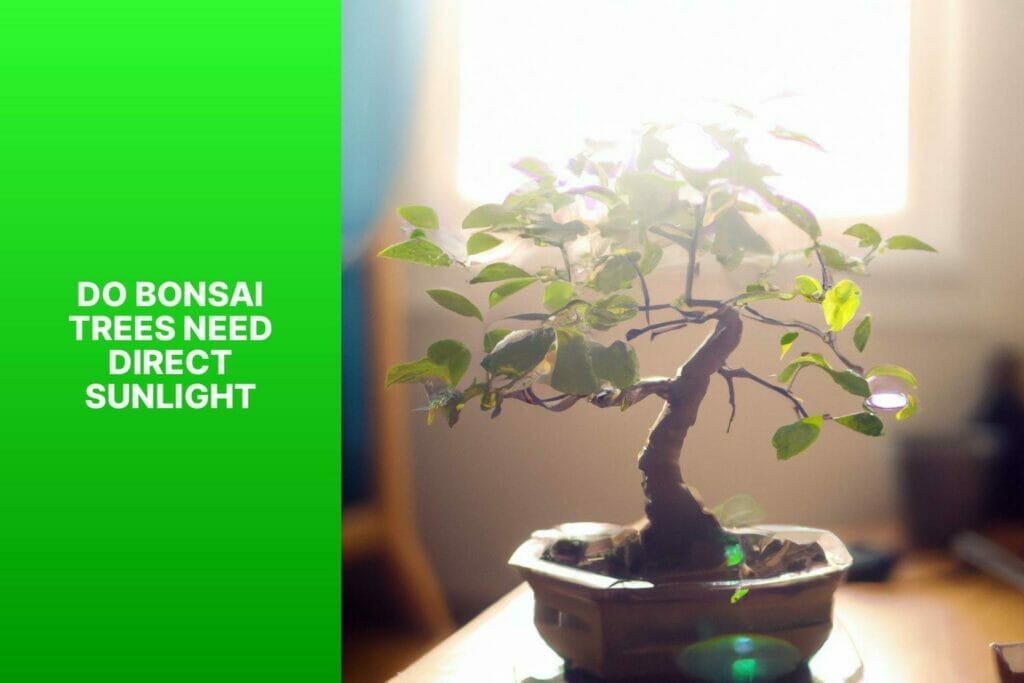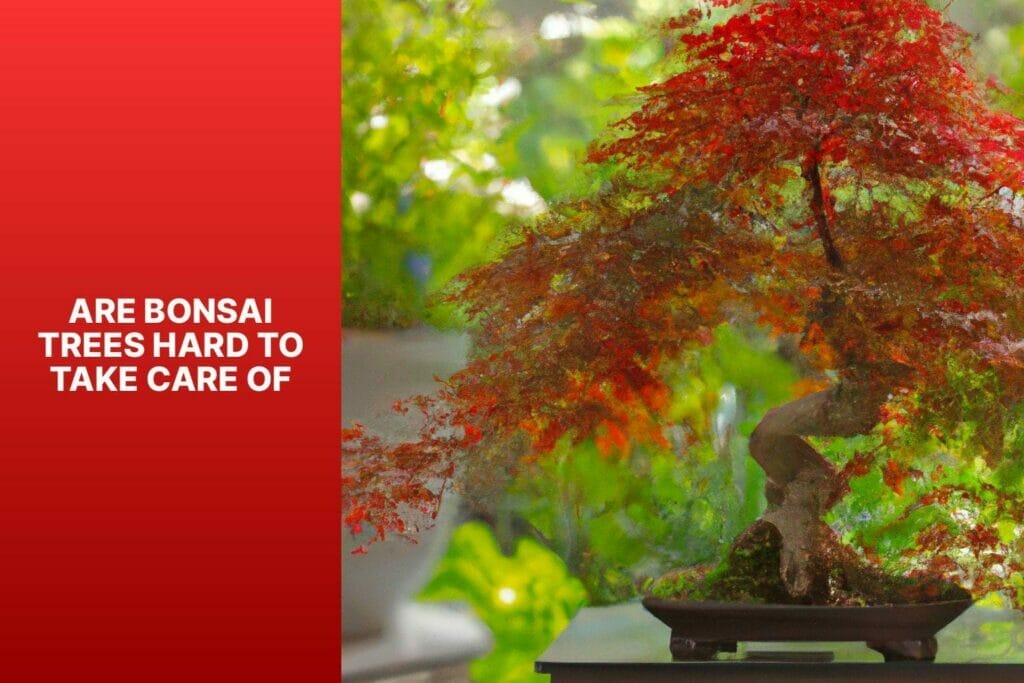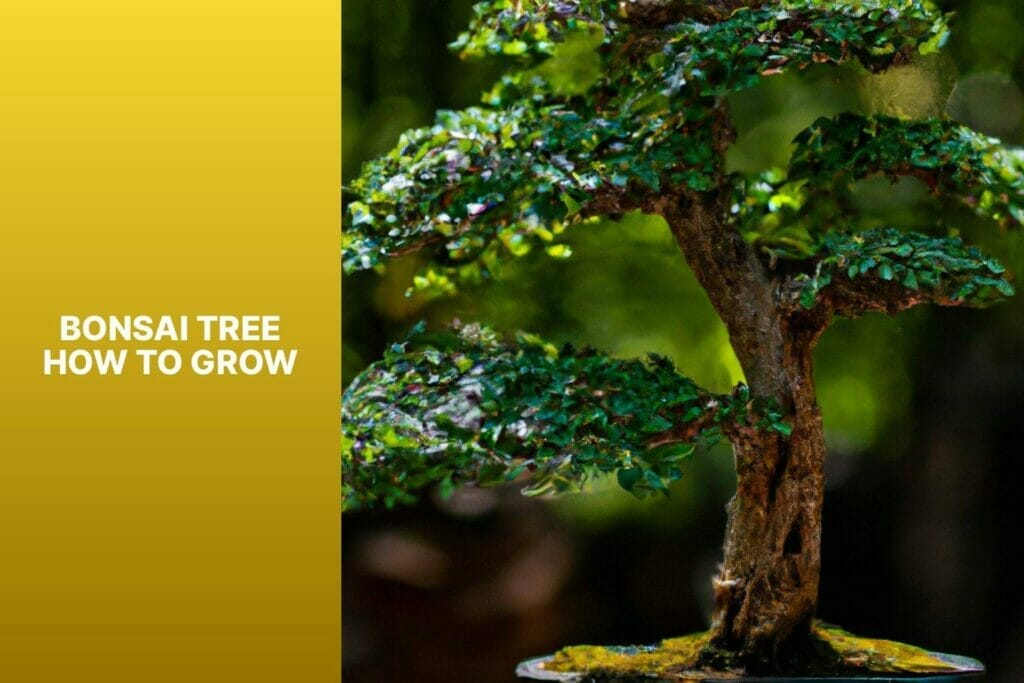Bonsai trees are miniature versions of full-sized trees, carefully cultivated to create a unique and aesthetically pleasing form.
As living plants, bonsai trees have specific care requirements to thrive, including proper sunlight exposure.
In this article, we will explore the significance of sunlight for bonsai trees and examine the factors to consider for their placement.
Many people wonder if bonsai trees need direct sunlight. The answer varies depending on the specific species of the bonsai and other environmental factors.
Understanding the light requirements for bonsai trees is essential to ensure their health and well-being.
Factors such as the bonsai species, geographic location, and climate must be considered when determining the ideal sunlight for these miniature trees.
Different species have varying preferences for sunlight; some thrive in direct sunlight, while others prefer indirect or partial shade.
Direct sunlight can have both positive and negative effects on bonsai trees. It can stimulate growth and development, leading to lush foliage and vibrant colors.
Excessive exposure to direct sunlight can also result in leaf burn, dehydration, and damage to the bark.
Alternative lighting options are available if direct sunlight is unsuitable for your bonsai tree.
These include placing the tree in areas with indirect sunlight, using artificial grow lights to mimic natural sunlight, providing partial shade by using a shade cloth, or strategically placing the tree under a larger plant or structure.
To ensure your bonsai tree receives proper sunlight, it is essential to provide the right balance. This can be achieved by monitoring the tree’s response to sunlight, adjusting its placement accordingly, and providing supplementary lighting when needed.
Key takeaway:
- Bonsai trees have specific light requirements: Understanding the light needs of bonsai trees is crucial for their growth. Direct sunlight may not always be necessary, and alternative lighting options can be considered.
- Factors to consider for bonsai tree placement: The species of the bonsai tree and the geographic location and climate of its environment should be taken into account when deciding whether to provide direct sunlight or opt for other lighting options.
- Effect of direct sunlight on bonsai trees: Direct sunlight can impact the growth and development of bonsai trees and the health of their leaves and bark. Proper balance and care should be maintained to prevent any negative effects.
Do Bonsai Trees Need Direct Sunlight?
Bonsai trees require direct sunlight for their optimal growth and overall health. Direct sunlight is essential for photosynthesis, which is crucial for the well-being of these trees.
Be cautious because excessive direct sunlight can harm bonsai trees, leading to sunburn and dehydration over time.
For bonsai tree enthusiasts, finding the right balance regarding sunlight exposure is recommended. Placing bonsai trees where they can receive several hours of direct sunlight each day is advisable.
Ideally, this sunlight should be during the morning or late afternoon when the intensity is milder. In hot climates, it is also wise to provide shade during the hottest part of the day to protect the trees from excessive heat and sun.
It’s important to remember that each bonsai tree is unique and may have varying sunlight requirements depending on its specific species and individual characteristics.
Carefully observing how the trees respond to sunlight and making necessary adjustments can ensure their healthy development and longevity.
What are the Light Requirements for Bonsai Trees?
The light requirements for bonsai trees vary depending on the species and location. It is important to consider the intensity, duration, direction, and quality of light that they receive.
Bonsai trees need bright, indirect light for photosynthesis to avoid leaf burn. It is recommended that they receive 12 to 16 hours of light each day to mimic natural daylight cycles.
The light should come from different angles to ensure even growth and prevent lopsidedness. Rotating the tree can help achieve this.
Natural sunlight provides a full spectrum of wavelengths and is ideal for bonsai trees. If natural light is limited, artificial grow lights can be used.
Understanding the specific light requirements of each bonsai tree species is crucial. Some thrive in full sun, while others prefer partial shade. Meeting the light requirements is essential for the health and growth of bonsai trees.
Similarly, I had a Juniper bonsai that suffered from a lack of light in my apartment. Its growth was stunted, and its branches became weakened.
THE TREE FLOURISHED AGAIN when I placed it near a south-facing window with sufficient sunlight. This experience taught me the importance of meeting the light requirements for bonsai trees.
Factors to Consider for Bonsai Tree Placement
When placing your bonsai tree, there are several factors to consider. Understanding the species and considering the geographic location and climate are essential.
Each sub-section in this discussion will provide valuable insights into how these factors influence the ideal placement of your bonsai tree.
So, if you want to ensure the health and vitality of your miniature tree companion, let’s dive into these important considerations.
After all, a well-placed bonsai can thrive and bring tranquility to any space!
1. Understanding the Species
Understanding the species of bonsai trees is essential for their proper care. It is crucial to consider the distinct needs of different species. To organize and comprehend this information better, a table can be helpful.
| Species | Light Requirements | Watering Needs |
|---|---|---|
| Juniper | Full sun to partial shade | Moderate |
| Elm | Full sun | Moderate |
| Pine | Full sun | Moderate |
| Maple | Partial shade | Regular |
Understanding the species helps determine the ideal amount of sunlight exposure for the bonsai tree. Junipers prefer a combination of full sun and partial shade, while elms and pines thrive in full sun.
Maples, on the other hand, prefer partial shade to prevent leaf scorching.
Each species also has specific watering needs. While all species require moderate watering, it is important to avoid overwatering, which can cause root rot, and underwatering, which can lead to dehydration and damage to the tree.
By understanding the needs of each bonsai tree species, you can provide proper care and create a suitable growth environment. Understanding the species is crucial for bonsai trees’ healthy growth and longevity.
Fun fact: Bonsai trees can live for hundreds of years when properly cared for.
2. Geographic Location and Climate
Geographic Location and Climate: When selecting a location for your bonsai trees, it is important to consider the geographic location and climate. Considering temperature, humidity, sunlight exposure, and seasonal changes would be best.
1. Temperature: Each bonsai tree species has its temperature requirements. Some prefer cooler climates, while others thrive in warmer temperatures. It is crucial to research the temperature tolerance of your bonsai tree and choose a suitable location with the right climate.
2. Humidity: Bonsai trees have varying preferences regarding humidity. Some prefer high humidity, while others do well in drier conditions. It is important to consider the average humidity levels in your area and select a bonsai tree that can adapt to those conditions.
3. Sunlight exposure: The amount of sunlight your bonsai tree receives depends on the geographic location. If you live in an area with long and hot summers, it is advisable to provide shade or protection to prevent sunburn. Ensure your tree gets enough direct sunlight in cooler climates for proper growth.
4. Seasonal changes: Your bonsai tree’s experience of seasonal changes will be influenced by its geographic location. Some trees require a dormant period during colder months, while others remain evergreen throughout the year. Understanding the seasonal changes in your area will help you choose a bonsai tree that can adapt and thrive.
Remember that the care requirements may vary for different bonsai tree species. It is essential to conduct thorough research and understand the specific needs of your chosen bonsai tree to ensure its overall health and vitality.
Effects of Direct Sunlight on Bonsai Trees
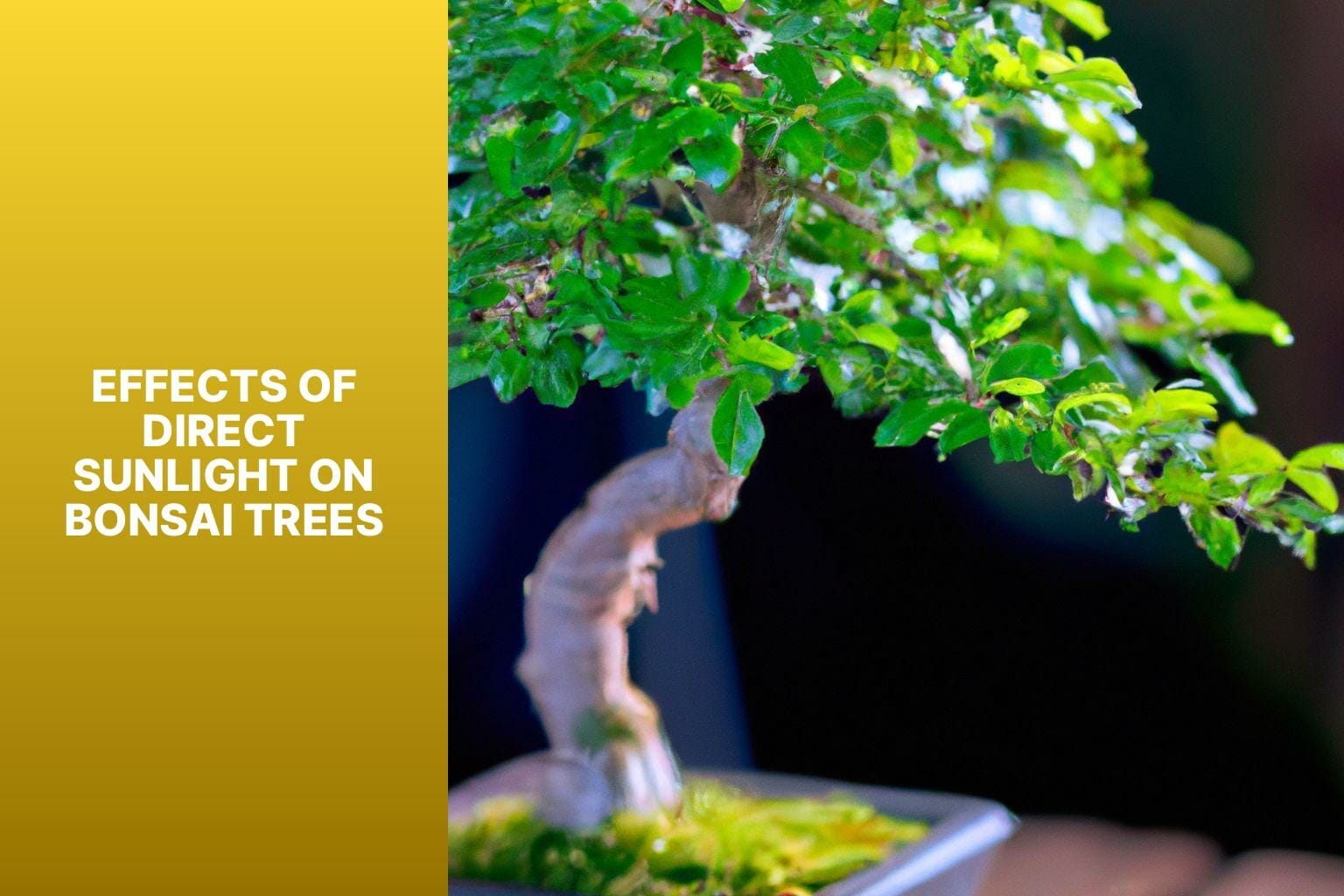
Photo Credits: Mnbonsainetwork.Com by Gary Gonzalez
Discover the fascinating impact of direct sunlight on bonsai trees. From growth and development to leaf and bark health, each sub-section in this article uncovers sunlight’s effects on these delicate miniature trees.
You’ll be surprised by the intricate relationship between sunlight exposure and the overall well-being of bonsai trees. So, let’s dive in and explore how the sun’s rays shape the beauty and vitality of these enchanting botanical wonders.
1. Growth and Development
Growth and development are essential for bonsai trees as they require appropriate sunlight. The provided table showcases the impact of various levels of sunlight on the growth and development of bonsai trees:
| Level of Sunlight | Growth and Development |
|---|---|
| Full Sunlight | Stimulates robust growth and enhances overall vitality. Bonsai trees exposed to full sunlight develop thicker trunks, denser foliage, and more extensive root systems. |
| Partial Sunlight | Allows for moderate growth and development. Bonsai trees receiving partial sunlight tend to maintain a balanced growth rate, with moderate foliage and healthy root systems. |
| Indirect Sunlight | Results in slower growth but promotes a more refined and delicate appearance. Bonsai trees exposed to indirect sunlight develop slender trunks, delicate foliage, and intricate branching patterns. |
| Low Sunlight | It stunts growth and can lead to weak and spindly bonsai trees. Insufficient sunlight inhibits photosynthesis, causing pale foliage, thin branches, and restricted root growth. |
To ensure optimal growth and development of your bonsai tree, it is vital to find the right balance of sunlight considering its species, location, and climate.
Providing the appropriate sunlight will result in a visually appealing and healthy plant.
2. Leaf and Bark Health
Proper sunlight exposure is crucial for the health of bonsai trees’ leaves and bark. Excessive direct sunlight can damage and scorch the leaves, while insufficient sunlight can result in weak growth and pale foliage.
To ensure optimal leaf and bark health, consider the following factors:
| 1. Sunlight Duration | Provide direct sunlight for a specific daily duration based on the bonsai species. Some trees prefer morning sunlight, while others thrive with afternoon exposure. |
| 2. Intensity of Sunlight | Moderate the intensity of sunlight to avoid excessive drying or burning of the leaves and bark. Partial shade can benefit delicate bonsai species. |
| 3. Daily Sunlight Monitoring | Regularly observe the bonsai tree’s sun exposure and adjust its placement to ensure it receives sunlight for healthy leaf and bark development. |
| 4. Protective Measures | Provide shade or a protective cover to shield the bonsai tree from intense sunlight during hot or sunny days. This prevents leaf scorching and maintains the health of the bark. |
Proper sunlight exposure is vital for bonsai trees’ overall well-being, including their leaves and bark health.
By considering the specific sunlight requirements of each bonsai species and monitoring the duration and intensity of sunlight, you can ensure that your bonsai has vibrant and healthy leaves and bark.
In ancient Chinese culture, bonsai trees were believed to possess spiritual qualities and bring harmony and peace to their owners.
The art of cultivating and shaping miniature trees has been passed down through generations, with each bonsai nurtured as a symbol of nature’s beauty.
Today, bonsai trees continue to captivate enthusiasts worldwide, reminding us of the elegance and tranquility found in the natural world.
Alternative Lighting Options for Bonsai Trees
Are you looking to give your bonsai trees the perfect lighting they need to thrive? Look no further than alternative lighting options. This section explores various options to provide the ideal lighting conditions for your bonsai trees.
From harnessing the power of indirect sunlight to utilizing artificial grow lights and considering partial shade, we’ll uncover the different paths you can take to ensure your bonsai trees receive the right amount of light for their growth and development.
Let’s shed some light on these alternative options!
1. Indirect Sunlight
Indirect sunlight is essential for the health and growth of bonsai trees. Remember these important points:
1. Bonsai trees require indirect sunlight to carry out photosynthesis and avoid sunburn effectively.
2. To provide the ideal conditions for indirect sunlight, place bonsai trees near windows covered with sheer curtains or in areas with spotty shade.
3. Indirect sunlight filters the sun’s rays, preventing the tree from overheating.
4. Positioning bonsai trees in areas where they receive indirect sunlight promotes balanced growth of their foliage, branches, and roots.
Pro-tip: Regularly rotate your bonsai tree if it leans towards the light source. This ensures that it receives even exposure to indirect sunlight and prevents uneven growth.
2. Artificial Grow Lights
Artificial grow lights are essential for providing the proper sunlight that bonsai trees need. These lights effectively mimic the natural light that is crucial for optimal growth.
Various artificial grow lights are available, each with advantages and disadvantages.
Here is a table showcasing the different types of artificial grow lights along with their benefits and drawbacks:
| Type | Benefits | Drawbacks |
| LED Lights | Energy-efficient, long-lasting | Higher initial cost |
| Fluorescent Lights | Affordable, provide a wide light spectrum | Less intense light compared to LEDs |
| High-Intensity Discharge (HID) Lights | Provide intense light, good for larger bonsai trees | Higher heat output requires more energy |
When using artificial grow lights, it is important to consider the light requirements of your specific bonsai tree. Some trees may require higher light intensity or a specific light spectrum.
Ensuring the trees receive the appropriate lighting duration is essential for their growth.
3. Partial Shade
Regarding bonsai trees, the right amount of sunlight is crucial for their growth and health. Partial shade can be suitable for certain species or conditions. Here are some important considerations for bonsai trees in partial shade:
- Amount of sunlight: Bonsai trees in partial shade should receive 3-6 hours of sunlight per day. This allows them to get direct sunlight while protecting them from intense heat or excessive exposure.
- Selecting the location: Choose a location with filtered sunlight or dappled shade, such as under the canopy of a larger tree or in an area with a pergola or lattice structure. This helps create a balance between sun and shade.
- Sunlight intensity: Partial shade provides gentler sunlight compared to direct sunlight. This benefits bonsai tree species sensitive to strong, direct sunlight by preventing leaf burn and dehydration.
- Monitoring temperature: Pay attention to temperature fluctuations when placing bonsai trees in partial shade. Shaded areas tend to be cooler, protecting the tree from extreme heat. Be cautious of areas with significant temperature drops during colder months.
- Adjusting watering schedule: Bonsai trees in partial shade may need less frequent watering than those in full sun. Reduced sunlight means less evaporation and moisture loss. Monitor soil moisture levels and adjust watering accordingly.
Considering these factors ensures proper care and growth of bonsai trees in partial shade, creating an ideal environment for their unique beauty to thrive.
Tips for Providing Proper Sunlight to Bonsai Trees
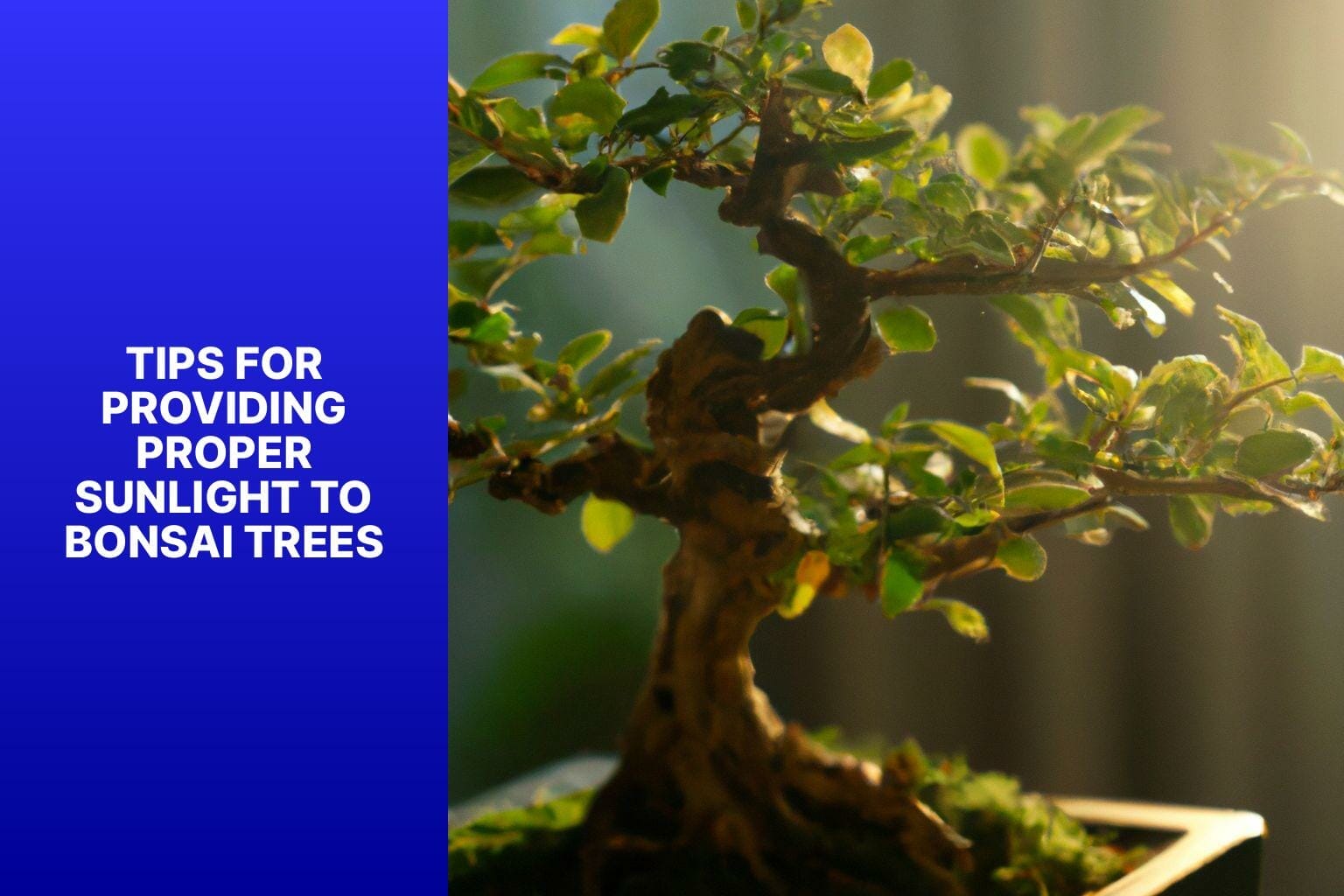
Photo Credits: Mnbonsainetwork.Com by Brandon Nelson
Proper sunlight is crucial for the health and growth of bonsai trees. Here are some tips for providing the proper amount of sunlight:
1. Identify the sunlight needs of your bonsai tree species. Each species has different requirements. For example, indoor bonsai trees prefer bright, indirect light, while outdoor bonsai trees may require full or partial sunlight.
2. Observe the sunlight patterns in your location. Take note of the duration and intensity of sunlight throughout the day. Bonsai trees generally need at least 6 hours of sunlight daily, but some may thrive with more or less.
3. Place your bonsai tree in the appropriate location. For indoor bonsai trees, position them near a well-lit window. Outdoor bonsai trees should be placed where they can receive the required amount of sunlight without experiencing extreme conditions.
4. consider using shade cloth or curtains to filter direct sunlight. This can prevent the leaves from burning or the soil from drying out too quickly.
5. Periodically rotate your bonsai tree to ensure all sides receive equal sunlight, promoting even growth.
6. Monitor your bonsai tree’s response to sunlight. Pay attention to any signs of stress, such as yellowing leaves or wilting. Adjust the lighting conditions accordingly to provide optimal sunlight.
Following these tips can help your bonsai trees thrive and maintain their beauty.
Some Facts About “Do Bonsai Trees Need Direct Sunlight”:
- ✅ Bonsai trees generally need about 5-6 hours of direct sunlight daily.
- ✅ Different species of bonsai trees have different sunlight requirements.
- ✅ Some shade-loving bonsai trees can tolerate low morning light with shade during the day.
- ✅ Evergreen bonsai trees need direct sunlight and can tolerate warmer climates.
- ✅ Willow leaf ficus bonsai trees need at least 16 hours of artificial light per day if kept indoors.
